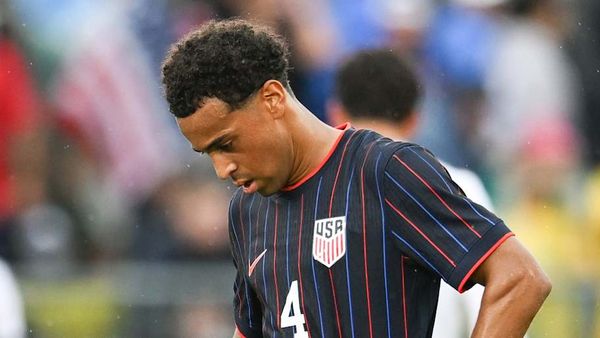

Are you outperforming on offense every game, but still losing? Tried all the meta plays and formations, just to fall short on defense? If so, you’re not alone. A common mistake amongst Madden 26 players is thinking they can win purely on offense; sadly, that’s not the case. Defense is just as important as offense, and can put your opponent under pressure if played well.
Unlike offense, however, things aren’t often as clear. There aren’t nearly as many defensive guides as there are offensive guides, but we’re about to change that. Today’s guide will serve as a basis for your basic defense needs, at least to get your foot inside the door. We’ll discuss the best tips and tricks you can use when starting. They should help you tackle the majority of the player base.
How to Play Better Defense In Madden 26
Coaching Adjustments

The first aspect of setting up a proper defense is learning coaching adjustments. Coaching adjustments mean how your players will react on the field, whether they’ll play conservatively or aggressively, how your safeties will be positioned, etc.
To select Coaching Adjustments, move your [R] analog stick inwards to see the list of settings. Let’s go through these settings one by one.
| Auto Flip Defensive Play Call | On | AI will flip your formation depending on the offense’s strong side. |
| Cornerback Matchups | Balanced | CB matchups will be based on normal gameplay settings rather than specific attributes, e.g., best rated/tall |
| Defensive Motion Response | Default | Zone defense will re-align according to offense motion changes |
| Option Read Key | Conservative (AI) | Focus on the QB during Option plays |
| Option Pitch Key | Aggressive (AI) | Focus on Pitch during Option plays |
| RPO Read Key | Conservative (AI) | Focus on the QB during Option plays |
| RPO Pass Key | Conservative (AI) | Focus on Pass coverage |
| Safety Depth | Close | Safeties will align 8 yards off the line |
| Safety Width | Pinch | Safeties will pinch their alignment |
These are good initial settings when learning the basics for defense. They cover a wide variety of plays and help you give away minimal information while closing in all the gaps.
As for the recommended playbook and formation, the Houston, Texas playbook is an ideal option to start with, as it incorporates most meta defenses. For the formation, Nickel is best to start with, since, once again, it covers a lot of bases. It is, however, very popular and sometimes overused. So make sure to adapt your formations as the game progresses.
Coverage Shell

Our second major tip is to use Coverage Shells. Now, what are coverage shells, and why are they important? Coverage Shells are used to hide your formation pre-snap. If you select Cover 3, your formation will always display Cover 3 regardless of what play you’ve chosen. Your play will still go on as selected; the only difference is what your opponent will see pre-snap.
Why is this important, though? We know no defense is impenetrable, and some offensive plays are better against certain formations. If your opponent can already guess what play you’re about to run, chances are they will run a counter-play, leaving you stumped on how they read your mind.
To avoid that, use a Coverage Shell. You can use it by moving the [R] analog stick left or right. This will become increasingly important as you move up the ranks. Players at higher ranks can identify coverages pre-snap to get an extra edge.
Stunts

Deception is the name of the game when it comes to defense, and that’s where stunts come in. A stunt on defense means your defensive linemen (or sometimes linebackers in a blitz) are crossing paths after the snap to confuse the offensive line’s blocking assignments. If the offensive line is confused on who to block, chances are you can slip an LB through to get to the QB or RB.
Remember that stunts are not necessary and can be applied to almost every formation. The recommended stunt for beginners would be the Texas 4 Man. You can also manually set up a stunt, similar to making a hot route on offense. Simply put, it’s determining the path your LB will run post-snap. Great for deceiving the offensive linemen.
Shading Downwards

You’ve got your pre-play setting adjusted, set up your formation, and selected all the required stunts. Now, it’s time to move on to the actual play. One major tip for most beginner-level matches is that you’ll always want to shade downwards when playing cover formations.
Shading downwards typically means your linemen will play tighter coverage underneath, better for drags, slants, curls, and short, quick passes. The reason behind picking a downward shade is that drag routes are the easiest way to gain yards at that level. Most offensive playbooks, probably the ones you’re using as well, have tons of drag route plays since they’re safer. It also covers against slants, curls, and short passes.
Once you’ve gotten a handle on shading, you can explore other shading options. There are 4 in total:
- Shade Inside: DBs will play with inside leverage, trying to take away slants, posts, and in-breaking routes.
- Shade Outside: DBs will position themselves outside, better against out routes, corners, fades, and other sideline patterns.
- Shade Over Top (Shade Up): They’ll give more cushion and focus on stopping deep routes like streaks, corners, and deep posts.
- Shade Underneath (Shade Down): They’ll play tighter coverage underneath, better for drags, slants, curls, and short, quick passes.
Picking The Right Play

This probably seems self-explanatory, but how many of us actually know what the right play is? In general, covers 2, 3, and 4 are good options when starting. These are all solid plays and can block a variety of plays, especially combined with coverage shells and stunts.
One tip you need to follow is sticking to your responsibilities. Just because you see a receiver open does not mean you run to cover them. Chances are, the offense is trying to split and thin out the defense, and leaving your zone will open up the gridiron to some easy yard gains.
Another point related to picking plays is knowing your limits. As we mentioned before, no play is 100% yard-proof. Every play has its strengths and weaknesses, but learning those weaknesses and playing around them is very important. If you’re running a blitz, you’re exposed to deep throws. When playing man coverage, you’re vulnerable to drag or curl routes. Just because they gain some yards against a particular play doesn’t mean it’s a bad play.
Mixing Up Plays

You’ve picked the right plays a few times in a row, but how long will you keep repeating the same play? Madden 26 isn’t a one-size-fits-all, meaning at some point, you should look to shuffle up your plays, keep your opponent on their toes. This is where blitzes come in. Blitz basically means to load up on the LOS and just rush the QB.
Obviously, if you’re loading up on the line, you leave yourself open to deep passes. However, the entire point of blitzes is to rush the QB so fast that they don’t have time to make the pass. This is especially easy against QBs with low AWR since they won’t spot WRs that fast, making them prone to easy sacks.
QB Tracking

Our final tip is regarding the heart of the offense, the QB. This tip is tailored more towards mobile QBs who are likely to run RPOs or just Pass/Option plays. If you’re having difficulty handling them, you can use the QB Contain action. This is done by first pressing the R1/RB button, followed by the L1/LB button. What this does is signal your outside edge rusher to contain the QB.
Your outside ER will pressure the QB as soon as he snaps, forcing him to make a quick pass that could lead to a possible interception. Another method is the QB shadow method. Here, you delegate a fast LB to mimic the QB’s movement. They don’t come upfield until they’ve locked in on the QB making a play. As soon as they see him making a play, they’ll zone in to stop him in his tracks.







